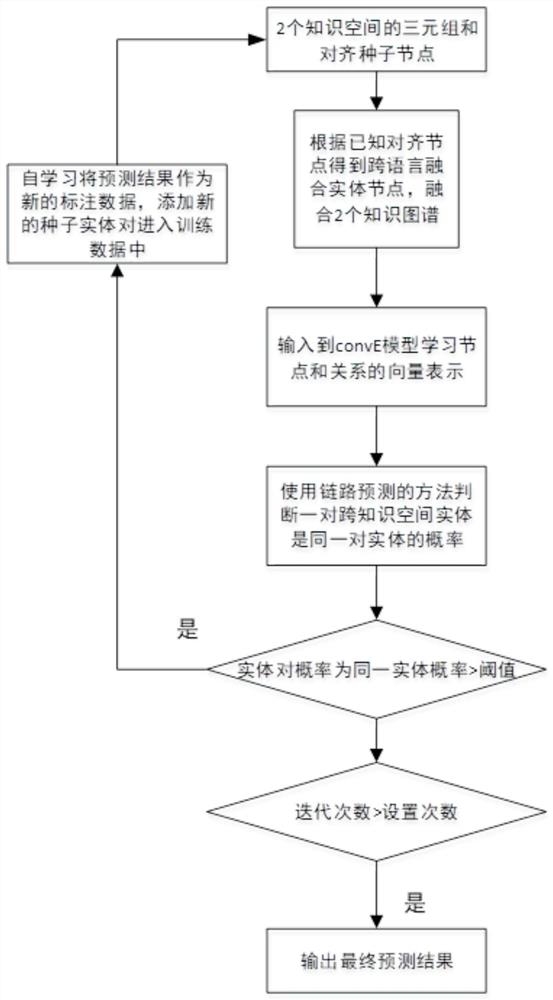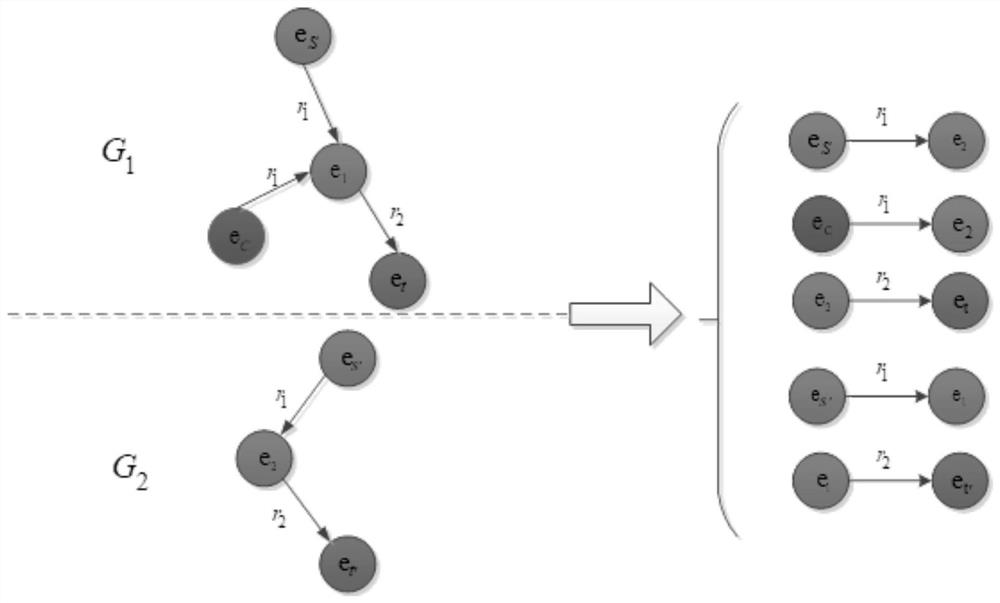A Method and System for Entity Alignment in Cross-lingual Knowledge Space Based on Link Prediction
A technology of link prediction and entity pairing, applied in semantic analysis, relational database, semantic tool creation, etc., can solve the problems of incomplete information entry, labor-intensive, restricted word translation accuracy, polysemous words, etc., and achieve saving Computing resources, designing lightweight effects
- Summary
- Abstract
- Description
- Claims
- Application Information
AI Technical Summary
Problems solved by technology
Method used
Image
Examples
Embodiment Construction
[0037] The following is a preferred embodiment of the present invention and the technical solutions of the present invention are further described in conjunction with the accompanying drawings, but the present invention is not limited to this embodiment.
[0038] The method for realizing cross-lingual knowledge space entity alignment based on link prediction in the present invention includes four main steps of cross-lingual knowledge space triple fusion, knowledge space representation learning, prediction of new alignment entity pairs, and self-learning adding new training data. They are as follows:
[0039] Cross-lingual knowledge space triple fusion: The main work is to generate new cross-knowledge space triples based on existing aligned seed entity pairs. The existence of these new cross-space triples is to constrain the relationship between the same pair of entities. The semantic vectors are close, and the representation vectors of the entities of the two knowledge spaces ...
PUM
 Login to View More
Login to View More Abstract
Description
Claims
Application Information
 Login to View More
Login to View More - R&D
- Intellectual Property
- Life Sciences
- Materials
- Tech Scout
- Unparalleled Data Quality
- Higher Quality Content
- 60% Fewer Hallucinations
Browse by: Latest US Patents, China's latest patents, Technical Efficacy Thesaurus, Application Domain, Technology Topic, Popular Technical Reports.
© 2025 PatSnap. All rights reserved.Legal|Privacy policy|Modern Slavery Act Transparency Statement|Sitemap|About US| Contact US: help@patsnap.com



